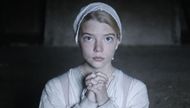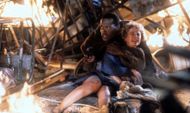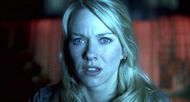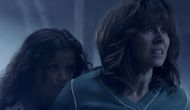Some myths exist to scare people for a reason. When a film gets one of those myths right, the fear feels heavier because the story already lives somewhere deep in your mind. These stories have traveled through time. People hear them as bedtime warnings, old sayings, or whispered tales told late at night. When a movie taps into that kind of fear and keeps it honest, the result feels personal and hard to shake.
Plenty of movies try to adapt myths, but not all of them land. Some stretch the legend too far. Some turn it into a spectacle. But a handful keep things grounded and make the myth feel like it could happen right outside your door. That is when it moves from fiction to something more unsettling.
This list focuses on those rare films that respect the myth and lean into what makes it scary. They do not rely on cheap tricks. They build the fear slowly and let the myth speak for itself. These are seven times a movie took a well-known legend and turned it into something that sticks in your head long after the screen fades to black.
7 Times a movie portrayed a scary myth in a perfect way
1. The Babadook (2014) – The Monster in the Closet

This film brings the myth of a creature hiding in a child’s room into a real-world setting. It follows a mother and her son as they deal with the death of the father. The fear begins when a pop-up book shows up on their shelf. The pages describe a figure called the Babadook. Once read aloud, the figure starts appearing in their house.
The creature does not rely on jump scares. It grows stronger every time the mother denies its presence. The tall shadow wears a coat and a top hat. It clicks before it shows up, and it moves like something pulled from a nightmare. The book keeps returning no matter how many times she destroys it.
The film turns the monster into a symbol of grief. The fear works because it ties back to real pain. The myth sticks because it blends horror with something you cannot escape.
2. The Witch (2015) – Puritan Folklore of Witches in the Woods

This story unfolds in 1600s New England. A family is exiled from their settlement and tries to live near the edge of a forest. They believe they are being watched. Soon, their baby disappears. The goat behaves oddly. Their food rots and crops die without warning.
Director Robert Eggers used old trial documents and actual folklore to build every part of the film. Black Phillip the goat represents the devil. The witches do not fly on broomsticks. They take children. They lure them. They destroy families from within. All of this reflects how Puritans wrote about witchcraft.
The myth is scary because it follows the exact beliefs people once held. The language sounds old because it is real. The forest feels cursed because of how the characters behave. There is no need to exaggerate anything. The fear works because it was already there hundreds of years before the story began.
3. Candyman (1992) – The Hook-Handed Urban Legend

The story begins with a familiar urban legend. Say his name five times in the mirror, and he appears behind you. But Candyman adds more than just a scare. The ghost belongs to a man who was murdered for falling in love with a white woman. His killers cut off his hand and covered him in honey.
The film ties this myth to the real history of Cabrini-Green. The ghost shows up when people believe in him. If they forget, he fades. That gives him power and tragedy. He does not shout or run. He speaks softly. He wants people to remember what happened.
The horror works because it is about pain that never left. The hook is not just for killing. It is part of his story. The bees are not just there for effect. They represent the swarm of lies and silence that kept his story hidden for so long.
4. The Ring (2002) – The Cursed Videotape

The myth here feels new, but it comes from older ideas. A videotape shows strange images. Whoever watches it receives a phone call and dies seven days later. The ghost behind the curse is a girl named Samara. Her powers spread through physical media. She died in a well. Her rage moved through the film.
This film is based on a Japanese legend about spirits who remain angry after death. Samara does not scream. She walks slowly. She crawls out of a television screen. That moment burned into people’s minds. It made fear feel modern.
The symbols on the tape include ladders, circles, and open doors. None are random. Each represents a part of her life or death. The fear comes from how quiet everything stays. You do not know when she will appear. You only know that she always does. The myth feels real because it never fully explains itself.
5. The Wailing (2016) – Korean Shamanic Possession

A small Korean village starts falling apart. People act strangely. Families are found dead. Everyone blames a Japanese stranger living in the forest. As suspicion grows, more rituals appear. A shaman is brought in. So is a priest. The deeper they dig, the more the fear spreads.
This film pulls from Korean shamanic tradition. The rituals are loud and messy. There are chants, sweat, and drums. Nothing feels polished. The fear builds slowly. There are no easy answers. The evil could be anywhere. It might even come from the people trying to stop it.
What makes the myth hit hard is the confusion. In shamanic belief, good and evil can switch places. The shaman might not be honest. The stranger might not be the only danger. The story does not spell out who is right. That uncertainty is what makes the myth believable. It feels like something that could actually happen.
6. La Llorona (2019) – The Weeping Woman

This version of La Llorona moves the ghost out of bedtime stories and places her in a house full of guilt. A former general is on trial for genocide. Protesters surround his home. Inside, something begins to haunt the family. It starts with water. Then lullabies. Then footsteps in the hall.
The maid who arrives might be La Llorona. She does not scream. She moves slowly. She carries sadness like a weight. The myth becomes more than a ghost story. It becomes a punishment. It points to crimes that were never faced.
What makes this portrayal work is the silence. The fear is not about shadows or jump scares. It is about seeing justice in a form no court could deliver. The ghost is not hunting random people. She haunts those who looked away. The myth gains power because it feels like history refusing to stay buried.
7. Antlers (2021) – The Wendigo

The Wendigo is a spirit of hunger. It takes over those who give in to despair. In Antlers, the story starts with a father who returns from a mine and begins to change. He hides in the attic. He growls and stops speaking. Antlers grow from his back. The son watches and tries to care for him.
The story unfolds in a cold and broken town. The landscape mirrors the myth. The silence inside the house feels heavier than words. There is no escape once the Wendigo takes hold. It does not possess. It transforms.
What makes this version work is the patience. The film does not rush the creature reveal. It shows the process. The body changes slowly. The fear builds as the family breaks down. The Wendigo becomes a cycle of pain. The myth sticks because it explains how darkness spreads. It turns one tragedy into something far worse.
These films prove that when horror respects the myth it’s based on, the result isn’t just scary—it’s unforgettable. They don’t just entertain; they tap into something older, deeper, and more human. Whether it’s grief, guilt, or generational pain, the best myth-based horror reminds us that the scariest stories are the ones we’ve been telling ourselves for centuries.
Follow for more updates.
Love movies? Try our Box Office Game and Movie Grid Game to test your film knowledge and have some fun!
